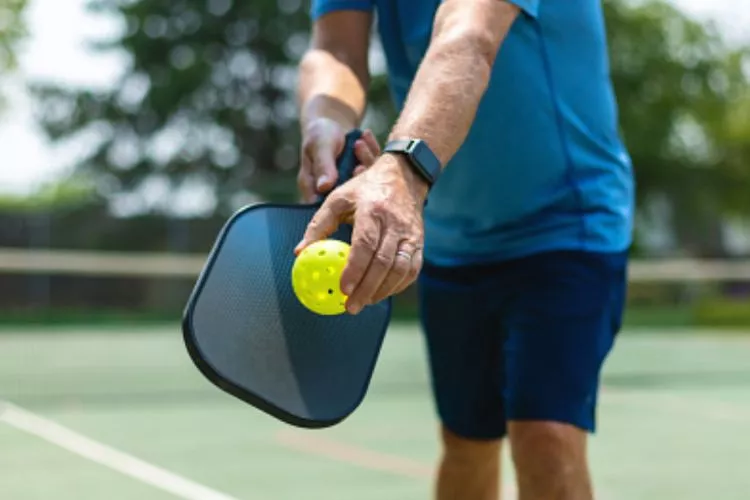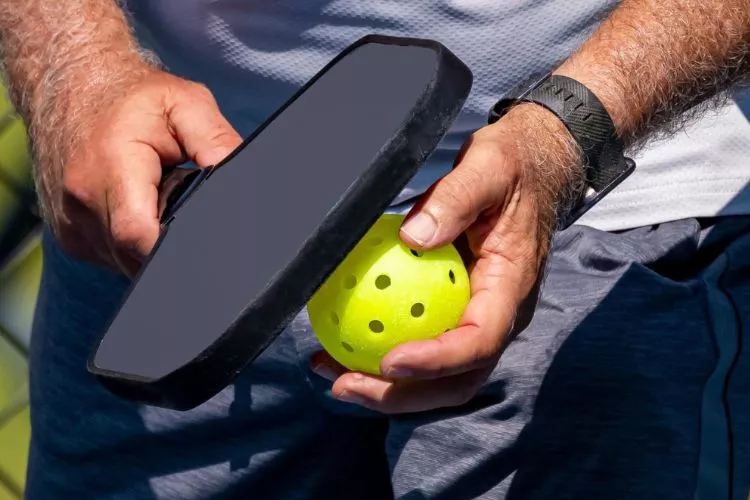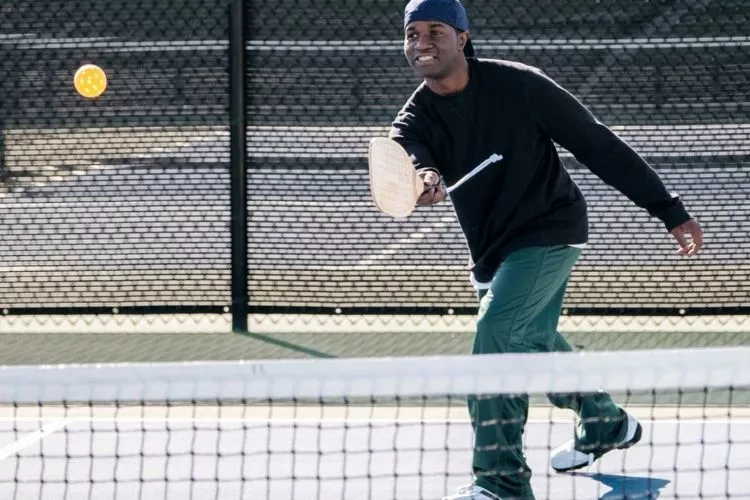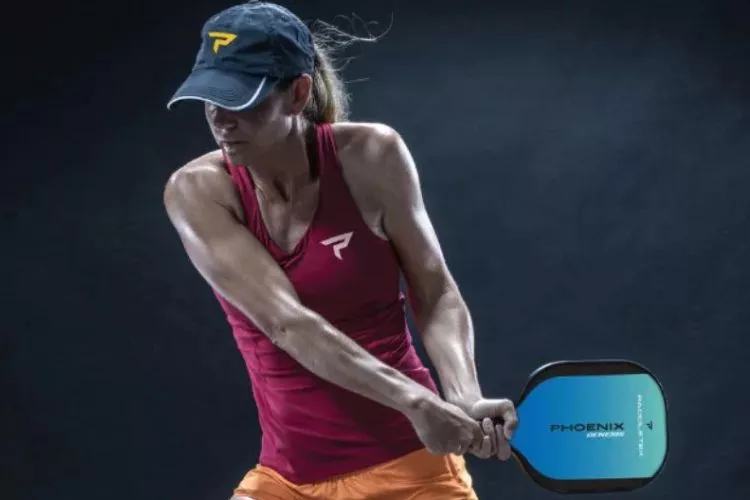Pickleball, the fun and rapidly growing sport, appeals to players of all ages and skill levels.
Serving plays a vital role in every match, and mastering different types of pickleball serves can give you an edge over your opponents.

In this article, we’ll explore various pickleball serves, from the basic to the advanced, that can boost your game and keep your opponents guessing!
7 Best Types of pickleball serves
Pickleball is an exciting and popular paddle sport that combines elements of tennis, badminton, and table tennis.
A crucial aspect of this game is the serve, which sets the tone for each point.
By learning and mastering different types of serves, you can enhance your performance and gain an edge over your opponents. Let’s dive into the various types of pickleball serves and how to execute them effectively.
1. The Underhand Serve
The underhand serve is a mandatory serve in pickleball, and it’s perfect for beginners to build their foundation. To perform this serve:
- Start with your feet shoulder-width apart behind the baseline, and position your body diagonally to the serving box.
- Hold the paddle using an Eastern grip, similar to shaking hands, with the paddle perpendicular to the ground.
- Using a pendulum motion, swing your paddle from back to front and beneath your waist, while lifting your opposite foot slightly.
- Hit the ball below your navel with an open paddle face, aiming for a gentle arc that clears the non-volley zone and lands in the service box.
Focus on consistency and accuracy when practicing the underhand serve before graduating to more advanced techniques.
2. The Topspin Serve
The topspin serve adds more speed and spin to the ball, making it harder for opponents to return effectively. Here’s how to execute a topspin serve:

- Utilize the same starting position and grip as the underhand serve.
- When swinging, accelerate your paddle upward quickly while brushing the ball with the paddle’s top edge, generating topspin.
- Follow through with your arm, lifting it higher than your standard underhand serve.
The topspin serve may require more practice to execute consistently, but it can be a valuable addition to your arsenal.
3. The Slice Serve
The slice serve introduces lateral spin and changes the trajectory of the ball, confusing your opponents and forcing them to adjust. To perform a slice serve:
- Maintain the same stance and grip as your underhand serve.
- For a right-handed player, during the forward swing, angle your paddle face slightly to the right and brush the outer half of the ball, creating side spin.
- Left-handed players should angle the paddle to the left and brush the ball’s outer half similarly.
The slice serve can be challenging for your opponents to predict and return accurately.
4. The Soft Serve
If you wish to catch your opponent off-guard, the soft serve is an effective approach that relies on finesse rather than power. To execute a soft serve:
- Begin with the usual stance behind the baseline, but choke up slightly on the paddle grip for more control.
- Use a controlled pendulum motion to hit the ball, with minimal ball trajectory and a low arc.
- Aim for the ball to land just inside the service box on the opposite court.
By using the soft serve, you can keep your opponents on their toes and disrupt their rhythm.
5. The Power Serve
The power serve is an advanced technique that utilizes sheer speed and momentum to surprise your opponents. Here’s how to perform a powerful serve:

- Adopt the stance and grip similar to the underhand serve, but with a wider stance and deeper knee bend.
- During your backswing, build up momentum by swinging your paddle back more than usual.
- As you swing forward, use your full body, from your hips to your arm, to generate maximum power through the ball.
- Aim for the deepest part of the service box, as this serve can be challenging to control.
While the above-mentioned serves are some of the most prevalent and effective in pickleball, there isn’t a strict limit to serve variations.
Players at higher skill levels often get creative and develop their own versions or styles of serves that work for them. Listed below are two additional serves you can consider experimenting with.
6. The High-Lob Serve
The high-lob serve can be used to throw off opponents by taking advantage of their positioning and weaker overhead shot techniques. To perform a high-lob serve:
- Start with the same stance and grip as the basic underhand serve.
- Hit the ball with an open paddle face and a gentle, upward motion to ensure a high, vertical trajectory.
- Aim for the ball to land deep in your opponent’s court, ideally near the baseline, making it more challenging for them to return.
It’s essential to practice this serve frequently, as the improper execution might result in easy put-away shots for skilled opponents.
7. The Fake-out Serve
The fake-out serve is an advanced technique used by experienced players to confuse and mislead their opponents by masking their true intentions. Here’s how to execute a fake-out serve:

- Establish the stance and grip similar to the underhand serve, and make a convincing arm motion during the swing.
- Before contacting the ball, quickly change the angle of your paddle face, modifying the intended direction or trajectory.
- Mix up your shots by incorporating different serve types, such as the slice or the power serve, catching your opponents off guard.
Successfully executing a fake-out serve requires precise timing, control, and the ability to read your opponent’s reactions.
While it’s great for players to create their strategies and serve styles, keep in mind that pickleball rules require serves to be underhand and below your waist level.
Experiment within these bounds, and you might develop a unique and effective serve of your own!
Frequently Asked Questions (FAQs)
u003cstrongu003eWhat is an illegal serve in pickleball?u003c/strongu003e
An illegal serve in pickleball is one that does not comply with the established rules of the game. Specifically, an illegal serve happens when the server does not keep both feet behind the baseline, does not strike the ball below the waist level, uses an overhand serve or hits the ball out of bounds.
u003cstrongu003eCan you do a backhand serve in pickleball?u003c/strongu003e
Yes, a backhand serve is perfectly legal in pickleball as long as it adheres to the service rules. That means, the server must strike the ball below his waistline (navel level) and the paddle’s head must be below the server’s wrist at the point of contact.
u003cstrongu003eIs it illegal to serve overhand in pickleball?u003c/strongu003e
Yes, it is illegal to serve overhand in pickleball. The rules require the serve to be made underhand, with the paddle contacting the ball below waist level. Overhand serving, which is common in games like tennis or volleyball, is not allowed in the sport of pickleball.
u003cstrongu003eCan you do a bounce serve in pickleball?u003c/strongu003e
As of now, you cannot do a bounce serve in pickleball. The ball must be hit into the air after being dropped or thrown up by the server; bouncing the ball off the ground and then striking it is not allowed according to the official pickleball rules.
u003cstrongu003eCan you do a drop serve in pickleball?u003c/strongu003e
Yes, you can do a drop serve in pickleball. On January 25, 2021, Pickleball adopted a new provisional rule allowing drop serves which permits the player to drop the ball and then hit it once it has bounced. This rule is beneficial for those who struggle with the traditional underhand serving motion.
Conclusion:
Understanding the various types of pickleball serves and their respective rules is essential for both beginners and experienced players.
Familiarizing oneself with the legal serves such as the underhand serve, backhand serve, and drop serve, while avoiding illegal serves like overhand and bounce serves, is key to mastering the sport.
Practicing these techniques and experimenting with different spins and placements will not only improve your serving skills but also enhance your overall game strategy.
As the sport continues to evolve, staying updated on the latest rule changes and serve techniques will keep you ahead of the competition in this exhilarating game of pickleball.

Pickleball’s more than a game to me—it’s a passion. I write, sharing its highs and lows, the thrills and the lessons. Some tales might draw you to the court, while others give a hint of the game’s magic. So, curious about my journey? Ready to dive deep into the world of pickleball with me? Let’s go.
